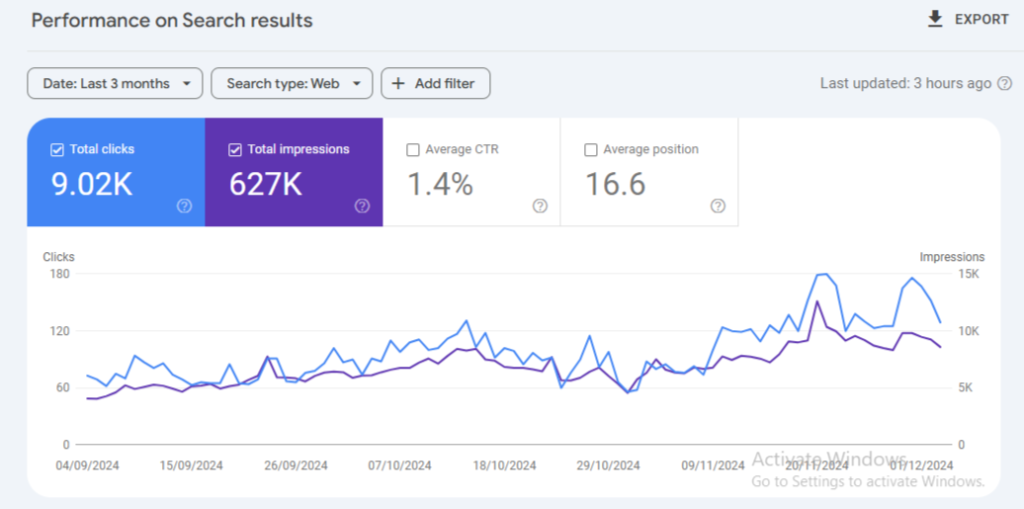Content-centric SEO is a powerful way to rank your website higher in search results. It focuses on creating and improving content that directly addresses what your potential customers are looking for. This will help your site become more visible, attract visitors, and increase sales. This article will help you understand content-centric SEO in more detail.
Table of Contents
ToggleWhat does Content-Centric SEO Involve?
Content-centric SEO involves creating quality content that both users and search engines like. The aim is to answer user questions while using relevant keywords. This includes researching popular topics in your field and finding keywords that are searched often but have little competition.
Once you have these keywords, you can create engaging content like blogs, articles, videos, or infographics to attract visitors.
Related Post: How to Write Blog Posts as a Non-Writer: Quick & Easy Guide
Benefits of Content-Centric SEO
Content-centric SEO offers many benefits:
- Improve organic rankings for targeted keywords.
- Increase website traffic.
- High engagement metrics, such as time spent on the page.
- Improve brand awareness due to greater visibility.
- High conversion rates as more qualified leads come from organic searches.
- Reduce cost per click (CPC) compared to paid advertising.
- Content that meets what people are searching for, making them happier.
- Content that stays valuable and effective over time.
How to do Keyword Research for Content-Centric SEO?
1. Identify Relevant Keywords
Keyword research is essential for content-centric SEO. It involves understanding your audience’s specific terms to find information about your products or services.
Tools like Google Trends and Answer The Public are invaluable for exploring related searches. Additionally, they help generate extra keyword ideas aligned with user queries. Consequently, this ensures your content effectively meets their needs.
2. Utilize Long-Tail Keywords
Long-tail keywords are specific phrases that capture user intent more effectively than broad terms. They are ideal for targeting users actively searching for solutions or products, increasing the likelihood of conversions.
Integrating long-tail keywords into your content strategy will help attract qualified leads and improve your SEO efforts by effectively catering to niche audiences. Additionally, analyzing trends on Google Trends will provide insights into emerging long-tail keywords gaining traction.
3. Analyze Competitors’ Keywords
Analyzing competitors’ keyword strategies will offer insights into successful SEO tactics within your industry. You can refine your keyword selection and content optimization by identifying the keywords they rank for. Moreover, this competitive analysis will help uncover market trends, identify opportunities, and strengthen your SEO approach for better results.
Additionally, tools like SEMrush or Ahrefs provide comprehensive data on competitors’ keyword rankings and search volume, enabling informed decisions for your SEO strategy.
How to Optimize Your Website for Content-Centric SEO?
1. Create Quality Content
Creating quality content is important for effective SEO. It should provide valuable information and include important keywords. Regularly updating your content keeps it relevant and current. Use trending topics and add visuals like images or videos to make it more engaging.
Encourage users to interact by commenting and sharing to increase visibility and engagement. Sharing your content through newsletters and on social media platforms will also help reach a wider audience.
2. Optimize Meta Tags and Headers
Optimizing meta tags and page titles is important for improving search result visibility. Incorporate targeted keywords and descriptive language into these elements to represent your content accurately.
Adding modifiers such as dates or locations can further differentiate your pages in search listings, attracting more relevant clicks. Regularly reviewing and updating these tags will ensure they remain effective and aligned with current search trends.
3. Structure URLs and Internal Links
Structuring URLs logically and including relevant keywords will significantly boost your site’s search engine visibility. Additionally, integrating internal links between related content pieces will help establish a cohesive content structure.
This not only aids users in navigating your site but also improves its overall SEO performance by improving indexation and user experience.
How to Measure the Impact of Content-Centric SEO?
1. Tracke Organic Website Traffic Growth
Tracking the organic website traffic growth will help identify effective strategies. Use tools like Google Analytics and GSC (Google Search Console) to analyze metrics such as website visits, unique page views, time spent on pages, and bounce rates.
This data will provide metrics for user behaviour, helping refine content and SEO tactics for continued improvement. Regular monitoring ensures adjustments align with audience preferences, optimizing your site’s performance.

2. Monitor Rankings and SERP Visibility
Monitoring rankings and SERP visibility is crucial to gauge your content’s performance compared to competitors. Tools like SEMrush or Ahrefs Rank Tracker help track keyword rankings, allowing you to make informed adjustments.
Regularly assessing these metrics can refine your SEO strategy, helping you maintain or improve your position in search results. This proactive approach ensures your content stays competitive and relevant, driving sustained organic traffic to your website.
3. Analyze Click-Through Rates (CTR)
CTR (click-through rate) indicates the performance of your title tags and meta descriptions in getting clicks from search engine results. A high CTR indicates that users perceive your content as valuable and relevant, boosting your visibility.
Conversely, a low CTR suggests opportunities to improve your titles and descriptions to better match user intent and increase engagement. Regularly monitoring CTR will help refine your SEO tactics, ensuring your content maximizes its potential reach and impact.
Tips for Getting Started with Content-Centric SEO
1. Develop an Effective Strategy
Start by researching relevant keywords to guide your content creation strategy, then incorporate these keywords into your content while utilizing internal and external links to enhance its value and authority.
Additionally, regularly updating your content ensures it remains relevant and engaging, reflecting current trends and addressing developing user needs.
2. Invest in Quality Resources and Tools
Investing in tools like Ahrefs, SEMrush, or a CMS platform like WordPress can streamline content creation and monitoring processes. Moreover, these tools offer robust keyword research, content creation, and performance-tracking capabilities.
By imposing their features, you can efficiently identify profitable keywords, streamline content production, and monitor their impact on SEO metrics. Ultimately, this investment saves time and enhances the effectiveness of your digital marketing efforts, ensuring sustained growth and visibility online.
Conclusion
Content-centric SEO is a powerful strategy for boosting your website’s visibility, attracting more visitors, and increasing sales by creating valuable content that meets user needs. First, this approach involves using relevant keywords, analyzing competitors, and optimizing various aspects of your site.
Additionally, regularly update your content with visuals and trending topics. This establishes ongoing relevance and engagement and improves SEO performance and long-term success.
Need more help with content-focused SEO for your website?
I have over 4 years of experience as a professional SEO content writer and strategist. If you want to design a content strategy for your website or have any questions, please explore my services or contact me directly. I’m here to discuss your needs and provide guidance.
FAQ’s
1. What is content-centric SEO?
Content-centric SEO focuses on creating valuable content that answers user queries and incorporates relevant keywords. By adopting this strategy, websites can rank higher in search results. Consequently, they attract more organic traffic, enhance user engagement, and ultimately drive conversions. This approach also helps establish authority within their industry.
2. Why is content important for SEO?
Quality content is necessary for SEO because it draws organic traffic, boosts search engine rankings, and builds authority. By creating engaging content that meets user needs and integrates relevant keywords, websites can enhance visibility and credibility in their industry. This, in turn, strengthens their digital marketing initiatives and strategies for attracting customers.
3. How do I choose keywords for content-centric SEO?
Select keywords based on relevance to your audience’s search queries. Use tools like Google Trends to identify popular keywords with manageable competition. Furthermore, focus on long-tail keywords that capture specific user intent. This strategy enhances the chances of ranking well in search engine results and getting targeted traffic to your website.
4. How often should I update my content for SEO?
You should update your content for SEO regularly. Aim to keep it fresh and relevant every few months. Additionally, update sooner when there are new trends or changes in your industry. This helps improve your rankings and keeps your audience engaged. So, keep an eye on your content and refresh it as needed.















